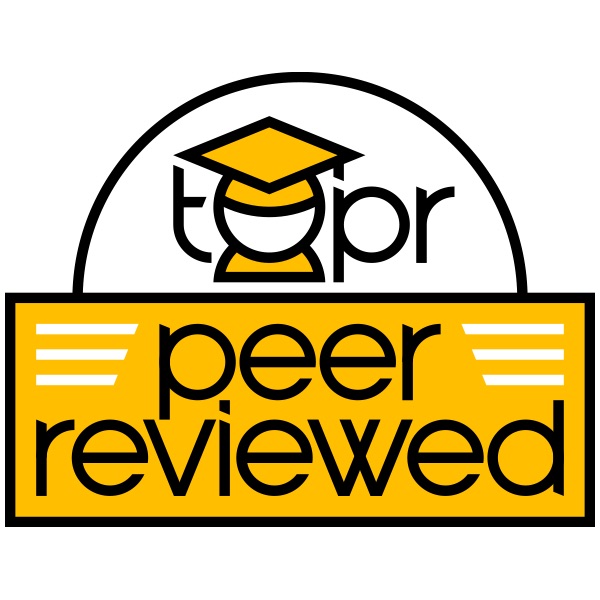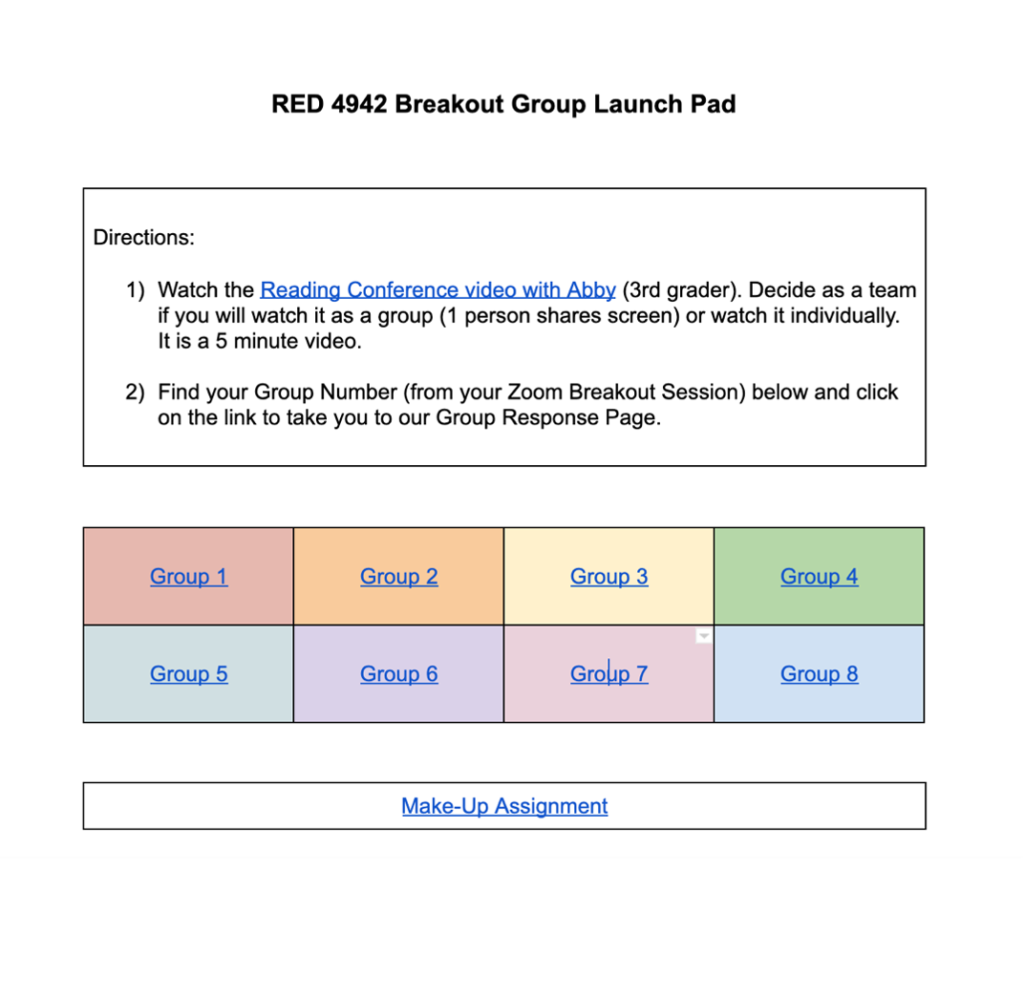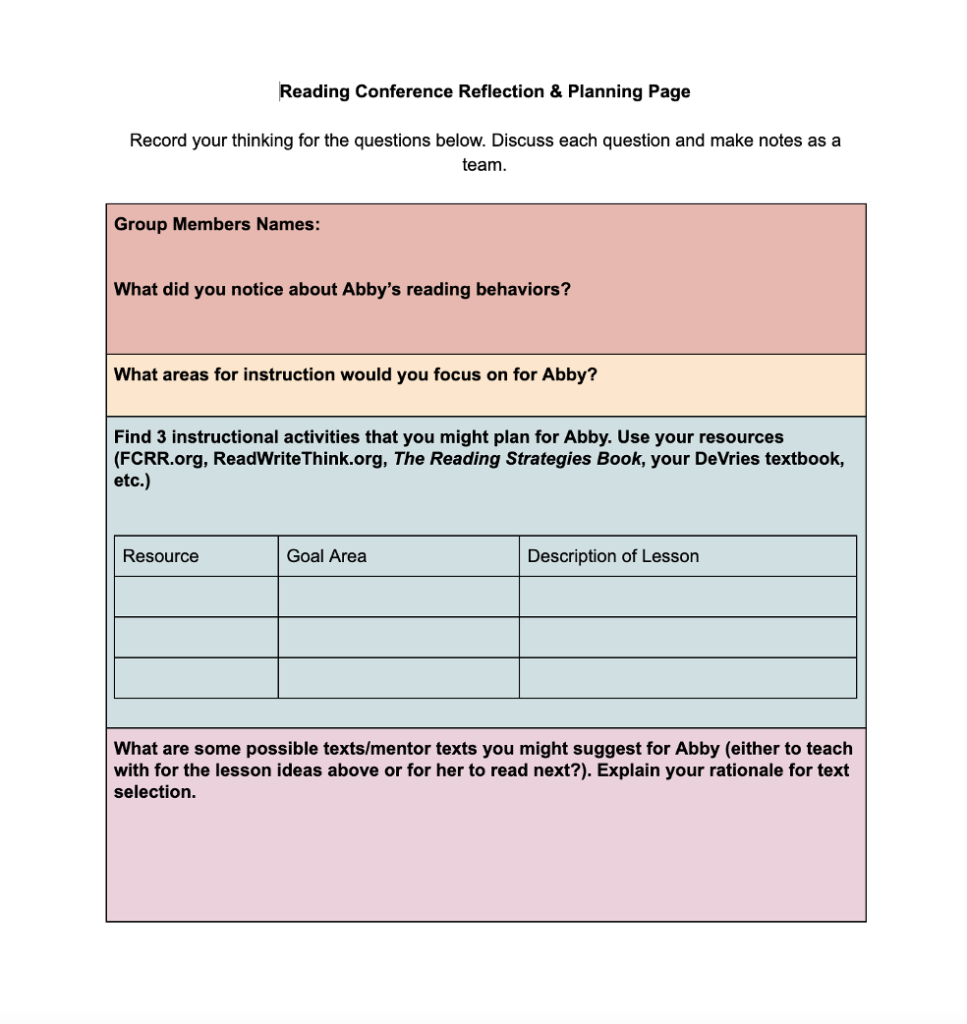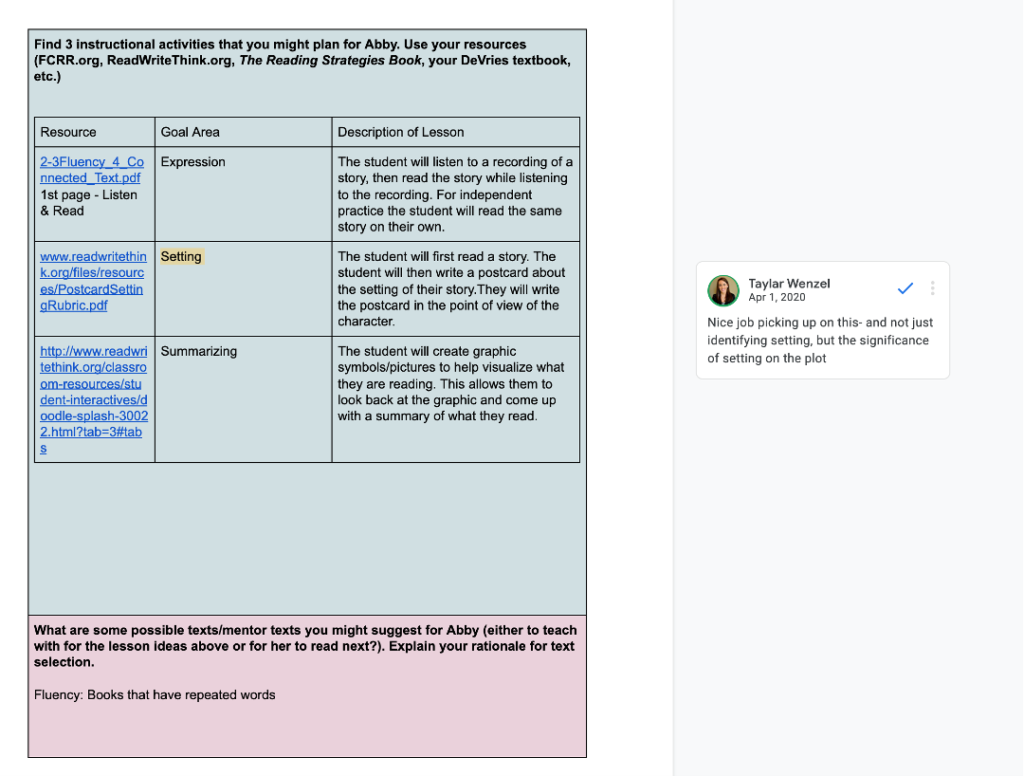Tags: Authentic Collaboration, Collaboration, Group Work, Interaction, Peer-Reviewed Entry, Problem-Based Tasks, Synchronous

Description
Learners in synchronous course meetings benefit from the opportunity to engage in rich, performance-based tasks that allow opportunities to collaborate with their colleagues and apply/refine their understanding of course content (Garrison, Anderson, & Archer, 2000; McBain et al., 2016).
Benefits for Students: Collaborative performance-based tasks during synchronous online learning allow for educational experiences that construct personal meaning and affirm mutual understanding among students. Further, these authentic experiences develop the three interdependent elements of the Community of Inquiry theoretical framework- social, cognitive, and teaching presence (Garrison, Anderson, & Archer, 2000). Collaborative performance-based tasks can be tailored to a variety of content areas. Instructors must simply provide a task-based context in an editable platform where students can engage in discourse and collaborate on the final product/outcome.
Benefits for Instructors: By observing students’ discussions and collaborative written work in real time, instructors are able to offer both verbal feedback (by contributing to breakout room discussion) and written feedback (comments added in real time during to the shared document as students are writing). Instructors can also easily observe the work of multiple groups by moving across tabs in a single browser window.
Implementation Example:
Course: RED 4942, Practicum for Assessment and Instruction of Reading
Students were provided with chunked content presentation during whole group synchronous instruction. Following the presentation of content, students were placed into groups through the breakout room feature of the synchronous online platform. Once in groups, students were given a link to join a collaborative document with directions, resources, and questions provided. Although each group received the same collaborative task, they had a direct link to access their group’s collaborative document.
As evident in the example, the sample Collaborative Performance-Based Task included the following elements:
- A link to a teacher-provided multimedia content is offered. In this example, the link provided is an instructor-created video of a reading conference with a 3rd grade student. Additional examples of linked content could include video, audio, artifact/document, text, etc.
- Directions for how to engage with the linked content are provided.
- Breakout group numbers align to linked templates for collaborative group work and response.
- The linked task template clearly outlines prompts to which the students should respond.
- As students are working, the Instructor is able to circulate among breakout rooms to engage in discussion with students. Additionally, the instructor is able to view each group’s collaborative document to insert real-time comments/questions/feedback to prompt the group’s thinking, without necessarily even entering the breakout room of the group.
Additional recommendations include:
- Apply to your specific field/content area by:
1) considering an authentic/performance based task that aligns to your learning goals and provides an opportunity for students to work together to apply recent learning,
2) create a task template that includes the prompts and fields where students should record their thinking (this may include links to additional content/input such as video links, podcasts, etc.),
3) duplicate the task template for the number of students groups you will have during the synchronous course session,
4) provide access to the task template links for each group (either through a module in your LMS, an additional “links” page for your class meeting, etc.)
- Make-up assignments (if offered) can be built into the task page for students to access.
- After each group has finished, they can visit the completed tasks of the other groups in a “carousel” approach, perhaps even adding comments/feedback to other groups.
- Students can download completed work and submit via Canvas for assignment completion/grading within the LMS.
Whole Class Performance-Based Collaborative Task Page Sample

Breakout Group Task Page

Samples of Task In-Progress with Real-Time Instructor Comments


Link to scholarly reference(s)
Garrison, D. R., Anderson, T., & Archer, W. (2000). Critical inquiry in a text-based environment: Computer conferencing in higher education model. The Internet and Higher Education, 2(2-3), 87-105.
McBain, B., Drew, A., James, C., Phelan, L., Harris, K. M., Archer, J., et al. (2016). Student experience of oral communication assessment tasks online from a multidisciplinary trial. Education + Training, 58(2). 134-149.
Citation
Wenzel, Taylar. (2021). Facilitate collaborative performance-based tasks in a synchronous course meeting. In A. deNoyelles, A. Albrecht, S. Bauer, & S. Wyatt (Eds.), Teaching Online Pedagogical Repository. Orlando, FL: University of Central Florida Center for Distributed Learning. https://topr.online.ucf.edu/collaborative-performance-based-tasks/.Post Revisions:
- July 6, 2021 @ 15:25:47 [Current Revision]
- July 6, 2021 @ 15:25:46
- July 6, 2021 @ 15:21:58
- July 6, 2021 @ 15:19:59

